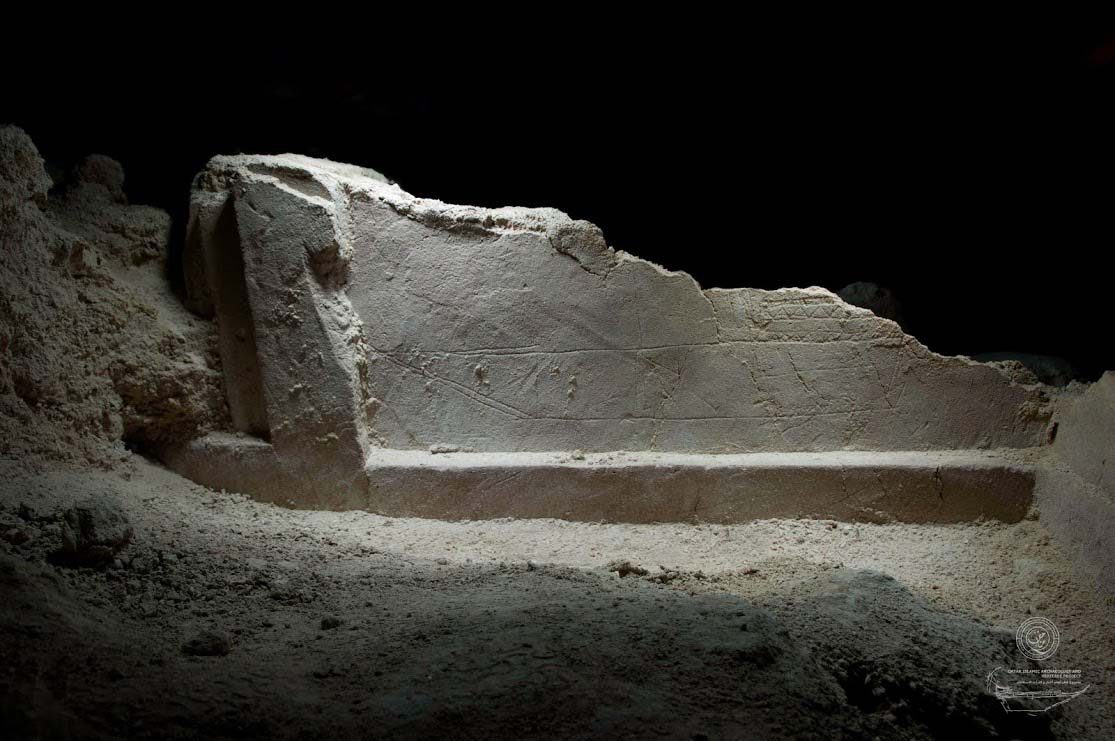
Archaeologists working at one of the country’s most important historical sites say they have uncovered artifacts that add weight to the theory that Qatar was an 18th century trading hub.
Researchers from the University of Copenhagen, the University of Exeter in the UK and Qatar Museums say they’ve found 15 images depicting boats etched into plaster on the walls of the 250-year-old buildings at Al Zubarah, located at the northwest corner of the peninsula.

A year’s worth of study has led the experts to conclude this “graffiti” depicts large ocean-going vessels used for trade in the Gulf and Indian Ocean region. They include a European warship, a locally made fishing boat and trade dhows traditionally constructed on the Malabar Coast of India.
The discovery advances the researchers’ understanding of the relationship that residents of that period had with the sea:
“The technical detail of the rigging, rudders and other aspects of the etchings show that the graffiti artists must have had an intimate knowledge of these vessels … (and) that Qatar was a center for international trade in the 18th century,” Qatar Museums said in a statement.
International commerce
The etchings are the latest discovery of relics that shed light on regional trading patterns at the time.
The University of Copenhagen notes that coins and ceramics dating to the 18th century found at Al Zubarah contain materials derived from eastern Asia, Africa, Europe and elsewhere in the Gulf.
Published research on 18th century ceramics found in Qatar suggests much of what had been previously recovered from that time originated in East Asia.
Chinese ceramics – which have been found at Zubarah – were common in the Gulf up until the 18th century, after which they began to be displaced by European wares, according to British academic Dr Robert Carter, who published an extensive report and catalog of the Qatar National Museum’s ceramics collection in 2011.
The Dutch East India Co. and Britain’s East India Co. ran trade routes in the 18th century connecting the Chinese city of Canton (now Guangzhou) with what is now Jakarta and Mumbai, as well as operating trading stations at various Gulf ports in what is presently Iran, according to a 2011 paper published by UK archaeologist Anthony Grey.
From there, Grey wrote, local Arab dhows redistributed cargo to settlements on the southern coast of the Gulf, such as Zubarah.
Zubarah
Founded by merchants from Kuwait, Zubarah thrived as a pearling and trading center in the 18th and early 19th century before being destroyed in 1811 and abandoned in the early 1900s, according to the United Nations Educational, Scientific and Cultural Organization.
Largely protected by a layer of sand, the fortified settlement became Qatar’s first UNESCO World Heritage Site in 2013.
Along with an active archeological dig site, the property also includes a visitor’s center, where a plaster impression of one of the recently recovered ship etchings can be seen.
Some of the original images have been removed from the site and taken to a laboratory, while others have been reburied for protection from the harsh climate, according to Qatar Museums.
Thoughts?







